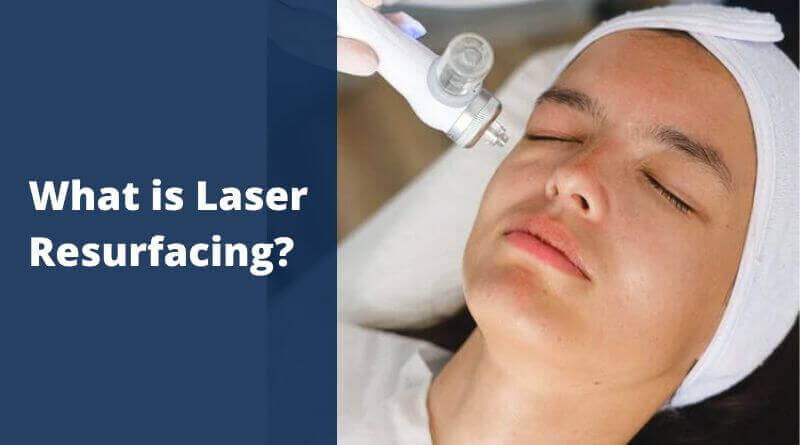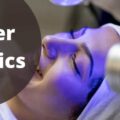What is Laser Resurfacing?
Laser resurfacing is a type of cosmetic surgery that uses lasers to improve the appearance of the skin. It is most often used to reduce the appearance of wrinkles, sun damage, or acne scars.
Laser resurfacing offered by a dermatologist or plastic surgeon can come from a doctor’s office, but most likely in a laser clinic. The procedure usually takes less than an hour and does not require anesthesia. Recovery time varies depending on the extent of the treatment, but most people are able to return to work within a few days.
Table of Contents
What Kind of Treatment Is Laser Resurfacing?
Laser resurfacing is a medical procedure that uses a laser to improve the appearance of your skin. The laser removes thin layers of skin, which prompts your body to create new, healthy skin.
Laser resurfacing is a safe and effective treatment for most people. However, it may cause some temporary side effects, such as redness, swelling, and blistering. It’s considered minimally invasive.
Laser resurfacing works by delivering short pulses of intense light energy to the targeted area. This blunt trauma to the skin cells stimulates the body’s natural healing process and encourages the production of new collagen fibres. The result is smoother, younger-looking skin.
Read: Why Do People Go To Laser Clinics?
What’s Included in Resurfacing?
There are two types of laser resurfacing: ablative and non-ablative lasers. Ablative lasers remove the top layer of skin, while non-ablative lasers work below the surface of the skin to stimulate collagen production. Both types of laser resurfacing can provide significant results, though ablative lasers tend to produce more visible results than non-ablative resurfacing. Non-ablative procedures include those that quite literally get to the root of the problem.
What Health Issues or Cosmetic Problems Can Laser Resurfacing Treat?
Laser resurfacing is a non-surgical procedure used to improve the appearance of the skin. The laser is used to remove the top layer of skin, which then stimulates the growth of new, healthy skin. This can be used to treat a number of aesthetic concerns and even health issues caused by oil glands or blood vessels.
Hair Removal
Laser resurfacing is a type of procedure that can be used for various purposes, including removing wrinkles, repairing sun damage, and even permanently removing hair. The laser works by delivering high-intensity energy to the skin, which destroys the upper layers of skin tissue. This process triggers the body’s natural healing response, resulting in the growth of new skin cells.
Tattoo Reduction & Removal
Laser resurfacing is a treatment option for tattoo removal. It works by targeting the ink pigment in the tattoo with laser energy and breaking it down. This process can take several sessions to complete and may not be 100% effective in removing all of the tattoo pigment. However, it can be an effective option for improving the appearance of a tattoo. If you are considering laser resurfacing for tattoo removal, be sure to consult with a board-certified dermatologist or plastic surgeon who specializes in this treatment.
Rhinophyma
One common use for laser resurfacing is to treat rhinophyma, a condition that causes the nose to become red and swollen. Rhinophyma can occur when oil glands produce too much oil in the skin. This excess oil can block the pores, which leads to bacteria growth and excessive inflammation.
Blepharoplasty
Blepharoplasty is a surgical procedure that is used to improve the appearance of the eyelids. Excess fat and skin are removed from the eyelids during this procedure, as the laser surgeon repairs any damaged tissue. Laser resurfacing can be used prior to more complicated procedures aimed at blepharoplasty in order to improve the results of the surgery.
Fractional Laser Resurfacing
Fractional laser resurfacing is a type of laser skin treatment that uses lasers to treat skin damage and aging. The treatment works by creating tiny wounds in the skin that stimulate the body to produce new collagen and elastin. This can reduce the appearance of wrinkles, scars, and other signs of aging.
You should definitely consider laser resurfacing if you are unhappy with the appearance of your skin. This type of treatment can help to improve the look of wrinkles, fine lines, and scars. It can also help to even out skin tone and texture.
There are several different types of lasers that can be used for resurfacing, so you will need to consult with a dermatologist or cosmetic surgeon to find out which one is right for you. Be sure to ask about the side effects of each type of laser before making your decision.
Recommended Articles:
Can Laser Hair Clinics Treat Stretch Marks?
Best Treatments for Aging Skin






